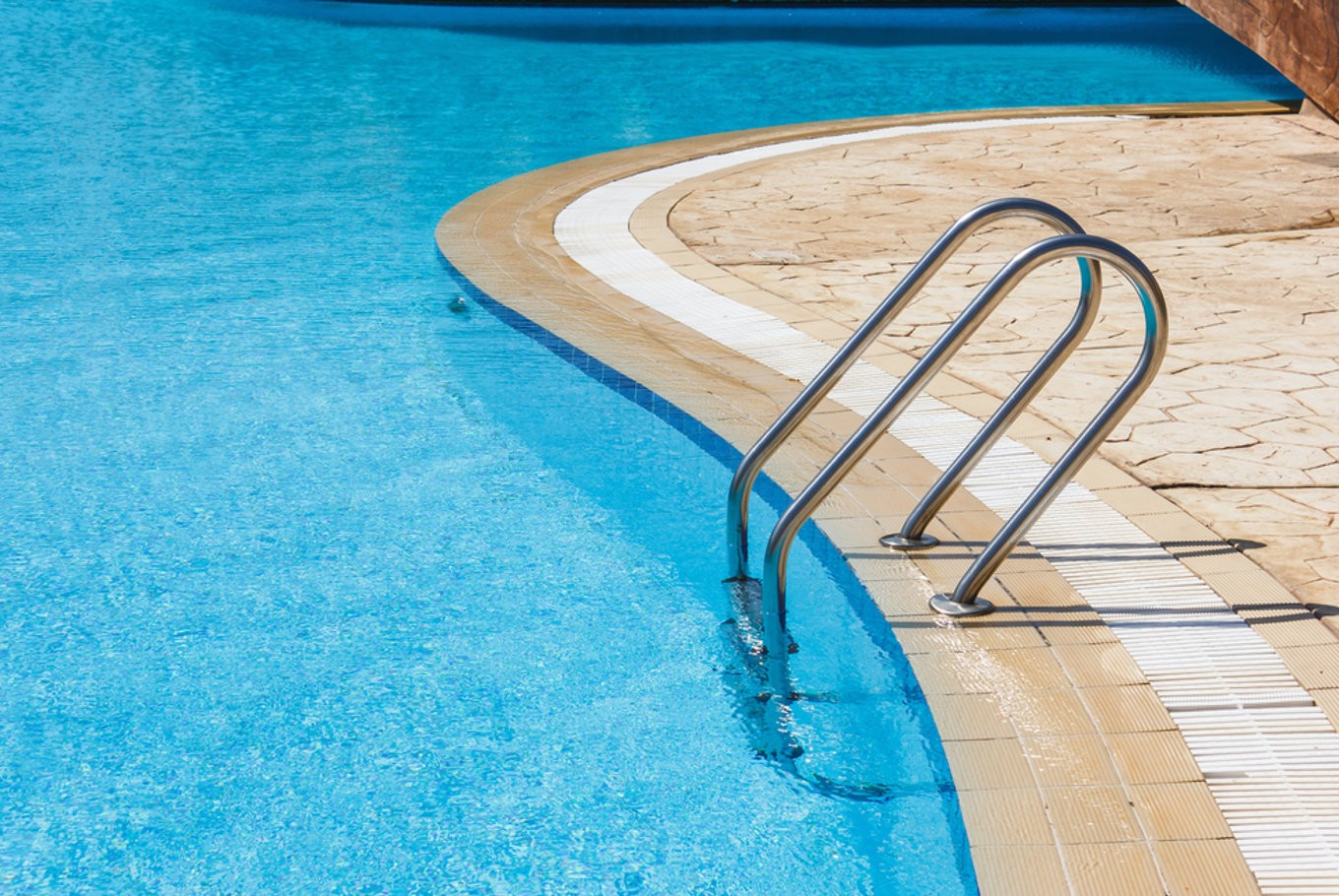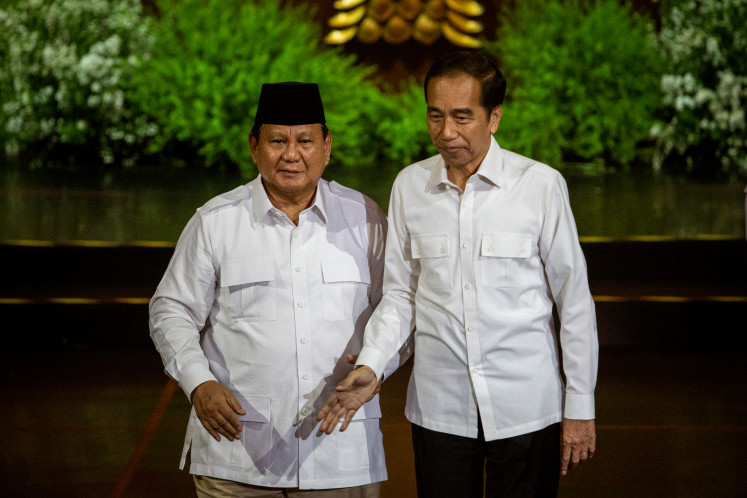Popular Reads
Top Results
Can't find what you're looking for?
View all search resultsPopular Reads
Top Results
Can't find what you're looking for?
View all search resultsSwimming pools and sex education: New challenges in the digital age
Where young people are unable to access sexual education in schools or from trusted adults, other sources of information – or misinformation – fill the void.
Change text size
Gift Premium Articles
to Anyone
T
he warning that women can get pregnant in a public pool because of “strong sperm” sounds like the sort of misinformation that is common on the internet these days. Unfortunately, a Child Protection Commission (KPAI) official was the one spreading this particular piece of pseudo-science in late February. To her credit, she quickly retracted the statement, but the meme-machine had already rolled into action.
Setting aside the government’s quick rejection of the idea and the subsequent apology, the incident nevertheless sparked a valuable discussion on a topic that is sadly and too often kept painfully quiet. Everyone, at every age, needs to have access to good quality, comprehensive sexuality education.
Several countries in the Asia-Pacific region have seen considerable improvements in sexual and reproductive health in the last few years, including declines in HIV infection rates alongside increases in contraceptive use. Yet for young people in the region, the need remains pressing.
The birth rate among adolescent women aged 15 to 19 continues to be relatively high in the region, according to United Nations data in 2018. Early marriage and gender-based violence — including sexual violence — remain serious concerns. Unmarried young people, especially girls, are often unable to access sexual and reproductive health information and services, while both boys and girls demonstrate limited knowledge about the transmission and prevention of sexually transmitted infections (STIs).
School-based, comprehensive sexuality education (CSE) plays a crucial role in addressing the health and well-being of children and young people. Beginning from early elementary and building through junior high school and high school levels, CSE provides age-appropriate education that supports the development of accurate knowledge, attitudes and skills, and fosters positive values that contribute to healthy relationships and behaviors.
When delivered by trained teachers with good quality curricula, CSE increases knowledge and improves attitudes on sexual health and behaviors, delays initiation and decreases the frequency of sexual intercourse, decreases number of partners, reduces sexual risk-taking and increases the use of condoms and contraception during sex. Equally important is evidence that CSE does not increase sexual activity, sexual risk-taking or rates of HIV and other STIs.
Despite what we know about the value of sexuality education, too many children and young people are still without this quality education and, therefore, are ill-equipped to navigate their transition from childhood to adulthood.
For those of us fortunate enough to have attended school, we may have been exposed — to varying degrees — to sexuality education. These lessons include about how our body works and changes as we grow, nobody has the right to touch our private parts unless we give permission, understanding our different feelings and how to manage them and — more likely than not — how to abstain from sexual activity and how to avoid getting pregnant.
Studies on sex education implemented in schools in several low- and middle-income countries highlight that if young people do receive any kind of sex education at all, it focuses too much on biology. This comes at the expense of topics such as respectful relationships, gender-equality, staying safe and preventing violence, values and interpersonal skills.
Yet all of these are essential to CSE. Even where biology and reproductive health are the focus of curricula and teaching, what may be assumed as essential information for all learners such as preventing HIV/STIs and pregnancy, along with contraception use, still rank low on what they are actually taught in the classroom.
Reviews on the status of sexuality education in the Asia-Pacific region paint an incomplete picture of the implementation of school-based programs, as data is limited in both scope and quality. These reviews do reveal, however, that most countries have some type of policy reference or curriculum content to provide young people with education and information on sexual and reproductive health, particularly at secondary-school levels.
Ministries of education struggle with social challenges to wide-scale implementation. Even in the face of these challenges, however, countries are making incremental progress by prioritizing CSE in curricula revisions and investing in teacher-training activities.
Where young people are unable to access CSE in schools or from trusted adults, other sources of information — or misinformation — fill the void. A 2019 UNICEF report on digital sexuality education in East Asia and the Pacific highlights the risks but also the opportunities presented by online platforms to expanding young people’s access to sexuality education that meets their needs. Platform managers and sexuality-education content creators need to better understand how such platforms may be impacting users’ sexual and reproductive knowledge, behaviors and attitudes.
We also need to know more about what draws young people to these spaces, what keeps them coming back and how to keep them safe while they are there. Issues such as these and more were at the heart of the global Switched On symposium on sex education in the digital space organized recently in Istanbul, Turkey, by UNESCO and UNFPA with the International Planned Parenthood Foundation and the Federal Centre for Health Education.
In a landscape where young people are increasingly turning to online sources for information on their bodies, sex and relationships, guidance on what constitutes accurate and age-appropriate CSE is more relevant than ever. Whether offline or online, young people deserve quality sexual and reproductive health education and information.
The international technical guidance created by the UN supports educators and facilitators working both in and out of school to create this content, ideally in partnership with young people themselves. Among its key concepts, the technical guidance proposes learning objectives the help students recognize that cyberbullying is harmful, that social media may be beneficial but should be used with care and that media sometimes presents incorrect information.
Here, then, is a silver lining to the unfortunate story involving a public official, mixed-sex swimming pools and conception. In the not-too-distant past, such a statement from a public figure could have gone unchallenged and even been accepted by many as factual. We can take some encouragement that digital citizens were not only quick to react by separating myth from fact but were also vocal in their call to recognize the importance of sex education.
***
Jenelle Babb is the regional HIV and health education advisor and team leader on education for health and wellbeing at UNESCO Bangkok.










